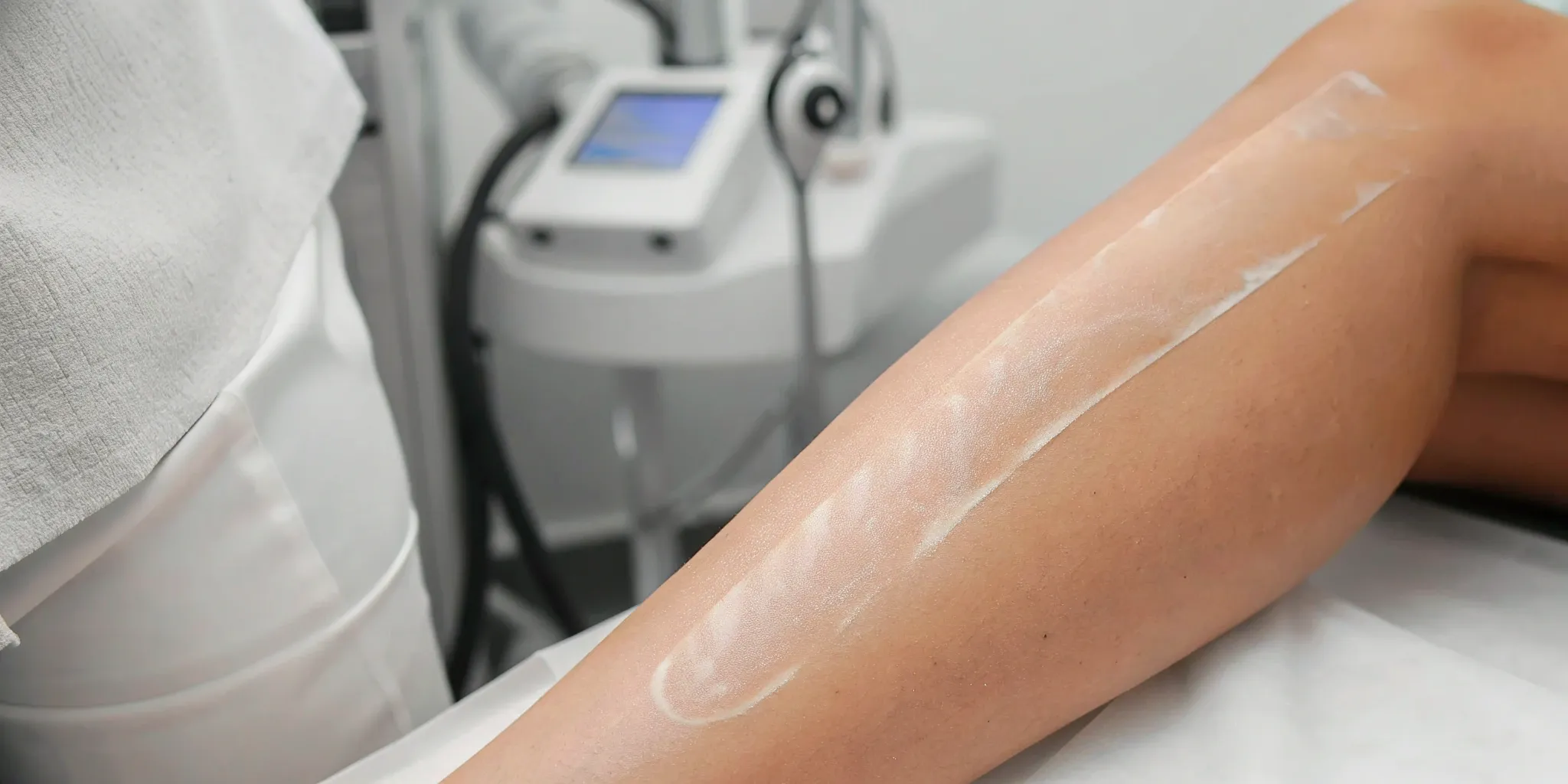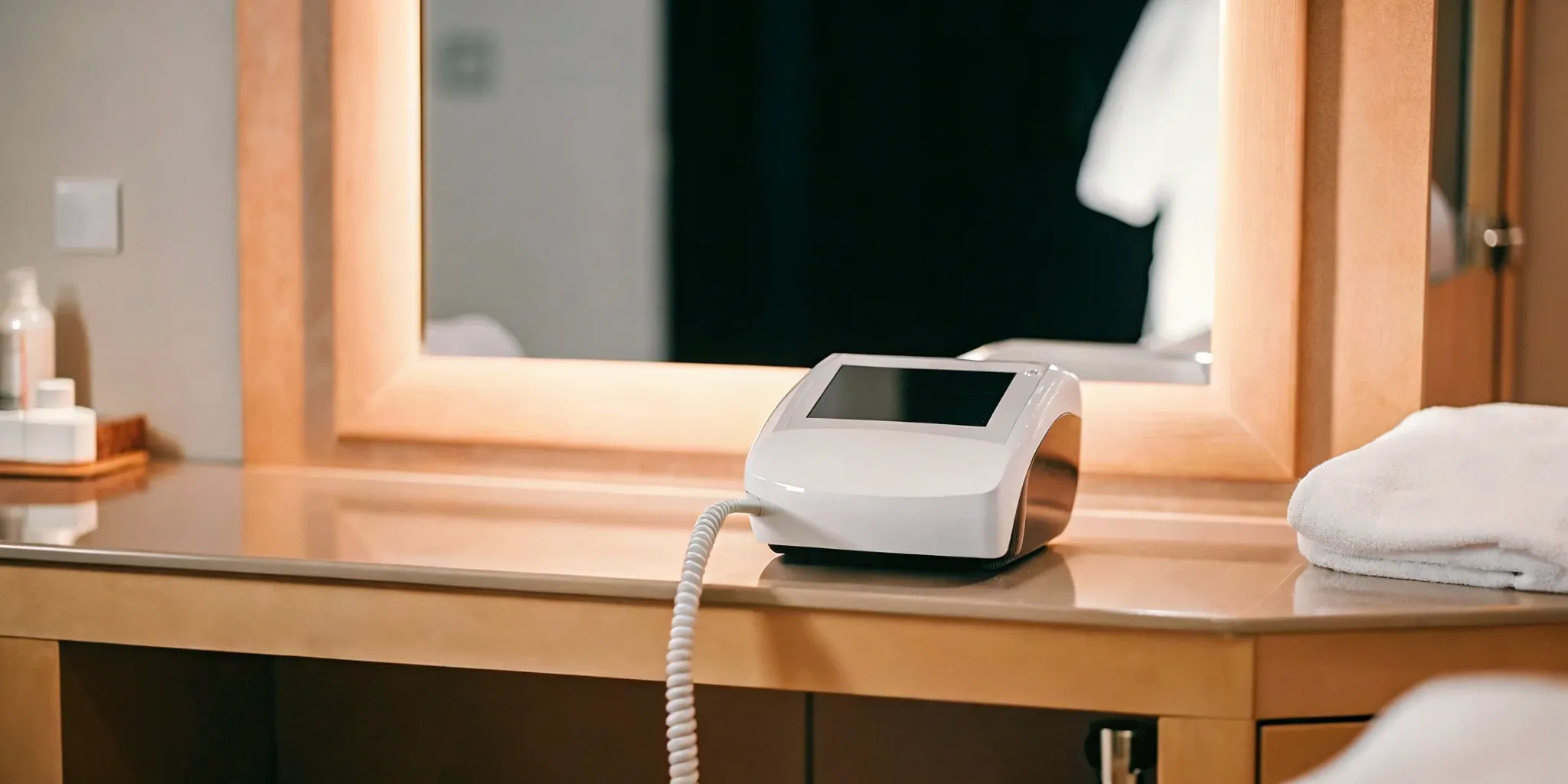For many people, removing a tattoo is about more than just aesthetics; it’s about emotional freedom. An unwanted tattoo can be a daily reminder of a time you’d rather forget, impacting your confidence and even your clothing choices. Surgical tattoo removal offers a path to immediate closure by physically excising the ink in one procedure. The most compelling tattoo removal surgery before and after stories often focus not just on the clear skin, but on the profound sense of relief that follows. This guide will cover the practical aspects of the surgery—from candidacy to recovery—but we’ll also touch on the powerful emotional transformation that comes with finally letting go of unwanted ink and starting fresh.
Key Takeaways
- Accept the Scar-for-Ink Trade: Surgical removal offers immediate, complete results in one session by physically cutting out the tattoo. This process guarantees a permanent scar, so you must be comfortable with this exchange before moving forward.
- Not All Tattoos Are Candidates: This method is most successful for smaller tattoos located in areas with looser skin. A professional consultation is the only way to determine if surgical excision is a safe and effective option for your specific situation.
- Your Results Depend on Your Choices: The final outcome is heavily influenced by two things: choosing a qualified, board-certified surgeon and diligently following their aftercare instructions to support proper healing and minimize scarring.
What Is Surgical Tattoo Removal?
If you’re looking for a way to remove a tattoo completely and quickly, surgical tattoo removal might be on your radar. This method, also known as surgical excision, is exactly what it sounds like: a surgeon physically cuts out the tattooed skin and then stitches the remaining skin back together. It’s a straightforward procedure that offers immediate results, making it a popular choice for smaller tattoos or for people who want to avoid the multiple sessions required for other methods. Because the entire section of skin is removed, the tattoo is gone for good in a single appointment.
The main trade-off with surgical excision is that it replaces your tattoo with a permanent scar. While a skilled surgeon will do their best to make the scar as neat as possible, it’s an unavoidable part of the process. This method is often best suited for tattoos located in areas where a scar can be easily hidden or for individuals who prefer a scar over an unwanted tattoo. Unlike other tattoo removal techniques that fade ink over time, excision removes it in one go, offering a clean break from your old ink. It’s a definitive solution, but one that requires careful consideration of the final aesthetic outcome. Think of it as trading one mark on your skin for another—one that you have more control over in terms of placement and appearance, but a mark nonetheless. This makes it a very personal decision based on what you’re most comfortable living with long-term.
How It Differs From Laser Removal
The biggest difference between surgical and laser tattoo removal comes down to the process and the final result. With laser tattoo removal, a specialized laser sends light energy into your skin to break down the tattoo ink into tiny particles. Your body’s immune system then gradually clears these particles away. This process is non-invasive but requires multiple treatments spaced several weeks apart. While it can significantly fade a tattoo, sometimes a faint “ghost” image or some skin discoloration can remain.
Surgical excision, on the other hand, is a one-and-done procedure. Instead of fading the ink, it removes the entire piece of tattooed skin, guaranteeing the tattoo is gone after a single appointment. However, it also guarantees you’ll have a linear scar. The choice really depends on your priorities: a longer process for minimal scarring, or immediate removal with a permanent scar.
What Happens During Tattoo Removal Surgery?
If you’re looking for a one-and-done solution for a small tattoo, surgical removal might be on your radar. Unlike laser tattoo removal, which breaks down ink particles over multiple sessions, surgical excision involves physically cutting the tattoo out of your skin. It’s a more invasive approach, but for the right candidate, it can be an effective way to remove unwanted ink completely in a single procedure.
The process is straightforward but requires the skill of a qualified professional. Think of it less like an aesthetic treatment and more like a minor surgical procedure. It’s best suited for smaller tattoos located in areas with enough loose skin to allow a surgeon to easily stitch the area closed after the tattoo is removed. Let’s walk through exactly what you can expect during the appointment.
A Step-by-Step Look at the Procedure
The procedure itself is quite direct. First, the surgeon will clean the area and administer a local anesthetic to completely numb the skin around your tattoo. Once you’re numb, they will use a scalpel to carefully cut out the entire section of tattooed skin. The size and shape of the incision are planned to remove the ink while making the resulting scar as discreet as possible.
After the tattoo is removed, the surgeon will pull the remaining edges of skin together and close the incision with stitches. This leaves a fine, linear scar where your tattoo used to be. For many, trading a tattoo for a small scar is a worthwhile exchange, especially when it means removing the ink in just one visit.
Managing Pain: Your Anesthesia Options
The thought of surgery can be intimidating, but the good news is that pain is very well-managed. Thanks to local anesthesia, you won’t feel the procedure as it’s happening. The surgeon injects a numbing agent directly into the treatment area, and most people report feeling only a slight pinch from the injection itself. The rest of the process should be comfortable and pain-free.
For a small tattoo, the entire surgery is usually completed in under two hours. Afterward, you might experience some soreness or discomfort as the anesthesia wears off, but this is typically manageable with over-the-counter pain relief. If you have concerns about pain, be sure to discuss them when you schedule a consultation so your provider can address them directly.
Is Surgical Tattoo Removal Right for You?
Deciding to remove a tattoo is a big step, and figuring out the best method can feel just as significant. While surgical tattoo removal offers a quick and complete solution, it’s not the right fit for every person or every tattoo. This method, also known as tattoo excision, involves physically cutting the tattooed skin out and stitching the remaining skin together. It’s a very different process from laser tattoo removal, which breaks down ink particles over multiple sessions.
Your candidacy for surgical removal depends on a few key things: the tattoo itself, its location on your body, and your skin’s unique characteristics. It’s a highly effective procedure for the right candidate, often removing the entire tattoo in a single session. However, it’s a true surgical procedure that leaves a scar. Understanding whether the benefits outweigh the considerations is a personal decision, and it starts with getting a clear picture of what makes someone a good candidate. The goal is to find the safest, most effective path to the results you want, and that begins with an honest assessment of your situation.
Key Factors That Determine Candidacy
So, how do you know if surgical excision is a viable option for you? It really comes down to three main factors: your tattoo’s size, its location, and your skin’s elasticity. This procedure is most successful with smaller tattoos. Think of it this way: the surgeon needs to be able to close the skin neatly after removing the tattoo. If the tattoo is small, there’s usually enough surrounding skin to make this happen easily.
The location is just as important. Surgical removal works best in areas where the skin is a bit looser and has more give, like on the stomach or back. Tattoos on areas with very tight skin, such as the ankle or wrist, are much harder to remove surgically because there isn’t enough slack to pull the edges together for stitching. Your individual skin elasticity also plays a major role, as healthier, more flexible skin will heal better and allow for a cleaner closure.
Why a Professional Consultation Is Essential
You can’t determine if you’re a good candidate just by looking in the mirror. This is where a professional consultation becomes absolutely critical. Sitting down with an expert is the only way to get a definitive answer. During your appointment, a specialist will carefully examine your tattoo, assessing its size, placement, and age. They will also evaluate your skin type and elasticity to determine if an excision is feasible and likely to produce a good result.
This meeting is also your opportunity to get all your questions answered. It’s so important to understand every aspect of the procedure, from the potential risks to what your final results might look like. A great provider will encourage you to ask questions and will give you a realistic preview of the outcome, including the type of scar you can expect. To get a personalized assessment and a clear path forward, the first step is to schedule a consultation with a trusted professional.
Understanding the Risks and Side Effects
Deciding to remove a tattoo is a big step, and it’s just as important to understand the removal process as it was to choose the original design. Like any medical procedure, surgical tattoo removal comes with potential risks and side effects. Being fully informed helps you set realistic expectations and make the best choice for your body and your goals.
The main trade-off with surgical removal is speed versus scarring. While it’s often faster than other methods, it is a more invasive procedure. Let’s walk through what you need to know about the potential complications and long-term effects on your skin. This will help you have a productive conversation with a professional when you’re ready to schedule a consultation.
Common Complications to Know
The most significant and certain side effect of surgical tattoo removal is scarring. Because the procedure involves cutting the tattooed skin away and stitching the remaining skin together, a scar is an unavoidable part of the healing process. For many, this is a worthwhile exchange for removing an unwanted tattoo quickly. Beyond scarring, there are other potential complications to be aware of.
Infection is a risk with any procedure that breaks the skin, so following aftercare instructions is critical. You might also experience some skin discoloration around the treated area. If your tattoo is very large, your surgeon may need to use a skin graft to close the wound, which can result in a more complex and noticeable scar.
How Your Skin Is Affected Long-Term
The scar you get from surgical removal is permanent. While it will likely fade and soften over time, it will always be there. For some, the presence of a scar is preferable to the tattoo itself, offering a sense of closure and improved self-confidence. However, it’s important to be mentally prepared for this new mark on your skin.
It’s also worth noting that complete removal isn’t always guaranteed, especially with deep or brightly colored inks. The success of the procedure depends on the tattoo’s size, age, and location. While surgical excision is very effective, some faint discoloration or texture changes may remain. This is why exploring all your options, including less invasive methods like laser tattoo removal that break down ink over time, is a key step in your journey.
Your Recovery: What to Expect After Surgery
Once the surgery is complete, your focus shifts to healing. How you care for your skin in the days and weeks following the procedure is just as important as the surgery itself. Proper aftercare is your best tool for ensuring a smooth recovery, minimizing the risk of complications, and achieving the best possible final result. Your surgeon will provide a detailed set of instructions tailored specifically to you—think of it as your personal recovery roadmap. Following their guidance is the most critical step you can take.
Caring for Your Skin Immediately After
Right after your procedure, the treated area will be cleaned and covered with a sterile dressing. Your main job is to keep this area clean and dry to prevent infection. Your surgeon will give you specific instructions on how to care for the wound, including when and how to change the bandage. You’ll likely experience some soreness and swelling, which is completely normal. This can usually be managed with over-the-counter pain relievers, but be sure to only take what your surgeon approves. While surgical removal is one option, understanding all your choices, including advanced laser tattoo removal, is key to making an informed decision.
The Healing Timeline: Week by Week
Everyone’s healing journey is a little different, but you can expect a general progression. In the first few days, redness, swelling, and tenderness are typical. While you can often return to work and light activities almost immediately, you’ll need to avoid strenuous exercise that could stretch the skin or strain the stitches. Your surgeon will provide detailed postoperative care instructions to guide you. Over the next few weeks, the incision will close and a scar will begin to form. It’s crucial to protect this delicate new skin from the sun, as UV exposure can darken the scar and affect the final appearance.
What Will Your Results Look Like?
Picturing your skin without that unwanted ink is probably what brought you here. While surgical tattoo removal is highly effective, the final result is a collaboration between your surgeon’s skill, your body’s healing process, and a few key factors. Understanding these elements from the start is the best way to align your expectations with what’s surgically possible, helping you feel confident and happy with the outcome.
Factors That Influence the Final Outcome
The final appearance of your skin post-surgery depends heavily on the tattoo itself. Surgical excision works best for smaller tattoos located in areas where the skin is a bit looser, like the stomach or arm. This is because the surgeon needs to be able to neatly stitch the remaining skin together after removing the tattoo. If a tattoo is very large or in a place with tight skin, like directly over a shin or elbow, it creates more tension on the incision. This can make the procedure more complex and impact the appearance of the resulting scar. Your overall health and skin quality also play a significant role in how well you heal.
How to Set Realistic Expectations
Let’s be direct: surgical tattoo removal trades an unwanted tattoo for a linear scar. The goal is a clean, ink-free result, but it’s important to expect a scar. A skilled surgeon will place the incision strategically to make the scar as discreet as possible, often along natural skin folds. While the removal itself happens in one procedure, the healing is a gradual process. Your scar will change in appearance over several months, typically fading and softening over time. The best way to understand your potential outcome is to schedule a professional consultation. We can assess your specific tattoo and give you a realistic preview of the results.
The Emotional Side of Tattoo Removal
For many people, the desire to remove a tattoo goes far deeper than skin. An unwanted tattoo can be a constant, visible reminder of a past you’ve moved on from, affecting everything from your confidence to your daily wardrobe choices. Research shows that feelings of anxiety and low self-esteem are common among those seeking tattoo removal. The procedure is often more than just a physical change—it’s an emotional release. Patients frequently describe feeling a profound sense of relief and freedom afterward, as if they’ve finally closed a chapter and can move forward with a clean slate. This emotional transformation is one of the most powerful results of all.
Aftercare Tips for the Best Results
What you do after your procedure is just as important as the surgery itself. Your commitment to aftercare directly influences how well your skin heals and the quality of your final results. Think of it as the final, crucial step in your tattoo removal journey. Following your surgeon’s guidance carefully will help you prevent complications and ensure your skin recovers beautifully. In fact, proper aftercare can actually speed up the removal process, getting you to your desired outcome sooner. By following the guidelines your provider gives you, you can promote healing, reduce the risk of complications, and achieve the best possible results.
This phase is a partnership between you and your surgeon. They perform the procedure, but you manage the day-to-day healing. It requires patience and diligence, but the payoff is skin that looks smooth and clear. The goal is to create the ideal environment for your body to do its natural repair work without any setbacks like infection or excess scarring. We’ll walk through the essential daily steps and specific tips for minimizing scars, so you feel confident and prepared for your recovery. Remember, the care you put in now will be reflected in your skin for years to come.
Your Daily Aftercare Routine
After your surgery, your main job is to keep the treated area clean and protected. Your surgeon will provide you with detailed instructions about your postoperative care, and it’s essential to follow them precisely. This routine will likely involve gently cleaning the area with mild soap and water, applying a prescribed antibiotic ointment to prevent infection, and keeping it covered with a sterile dressing. Sticking to this daily regimen is the best way to support your body’s natural healing process. If you ever have questions or concerns about your routine, you should always feel comfortable and are encouraged to get in touch with your provider.
How to Minimize Scarring
One of the biggest concerns with any surgical procedure is the potential for scarring. The good news is that you have a lot of control over this outcome. The single most important rule is to avoid picking, scratching, or peeling the treated area. Letting your skin heal without interference is critical to minimizing the risk of scarring. Following all post-treatment instructions, like keeping the area protected from the sun, will also make a significant difference. Once you’re fully healed, treatments like SkinPen Microneedling can also be an excellent option for further improving your skin’s texture and appearance.
How to Choose the Right Surgeon
This is arguably the most important decision you’ll make in your tattoo removal journey. Finding the right surgeon isn’t just about getting the procedure done; it’s about ensuring your safety, managing your expectations, and achieving the best possible aesthetic outcome. While a quick online search might give you a list of names, taking the time to properly vet a provider is a non-negotiable step. Think of it as hiring someone for a highly specialized, delicate job—because that’s exactly what it is. You want a professional who not only has the technical skill but also understands the artistry involved in minimizing scars and working with your skin.
At Ultimate Image MedSpa, we believe that every client deserves expert care, which is why we emphasize the importance of professional consultations for all our services. Whether you’re exploring laser removal with us or surgical excision with a surgeon, the principles of choosing a great provider remain the same. It comes down to two key actions: verifying their qualifications and asking the right questions. A great surgeon will have a proven track record and will be transparent and communicative, making you feel confident and comfortable every step of the way. This is your body and your skin, and you have every right to be selective.
Must-Have Qualifications in a Provider
First things first, let’s talk credentials. The most important qualification to look for is board certification in plastic surgery or dermatology. This isn’t just a fancy title; it means the surgeon has completed extensive, rigorous training and is held to the highest standards of patient safety and ethical practice. Don’t hesitate to check their credentials online or ask the office directly. Beyond certification, look for a surgeon with specific experience in surgical tattoo removal. Ask to see a portfolio of their work. Remember, a scar is an expected outcome of this procedure, so you want someone with the skill to make it as minimal and discreet as possible. This is not the time to shop for a bargain; it’s the time to invest in expertise.
Questions to Ask During Your Consultation
Your consultation is more than just a price quote—it’s your opportunity to interview the surgeon. A good provider will welcome your questions and give you honest, thorough answers. Come prepared with a list. Start by asking about the likely outcome for your specific tattoo, including the potential risks and complications. Discuss how your tattoo’s size, location, and ink colors might influence the procedure and the final scar. A crucial question is whether they will perform a test spot to see how your skin reacts. If a provider seems rushed, dismisses your concerns, or can’t provide clear answers, consider it a red flag. The right professional will make you feel informed and empowered to make the best decision. Ready to start a conversation? You can always contact us to discuss your aesthetic goals.
Related Articles
- Fast Tattoo Removal: Safe & Effective Options – Ultimate Image MedSpa
- Laser Tattoo Removal | Everything You Need to Know
- Tattoo Removal Before & After: What to Expect – Ultimate Image MedSpa
- Tattoo Removal: A Complete Guide to the Process – Ultimate Image MedSpa
- Ultimate Guide of Tattoo Removal – Ultimate Image MedSpa
Frequently Asked Questions
Is surgical removal really better than laser removal? Neither method is universally “better”—it’s about what’s best for your specific situation and goals. Surgical removal is a great option if you have a small tattoo and want it gone in a single session, provided you’re comfortable trading the ink for a permanent scar. Laser removal is a non-invasive process that avoids a surgical scar but requires multiple treatments over several months to fade the ink. The right choice depends on your priorities: immediate removal with a scar, or a gradual fading process with minimal scarring.
What will the scar actually look like? You can expect a fine, linear scar where your tattoo used to be. A skilled surgeon will aim to place the incision in a way that makes the scar as discreet as possible, sometimes hiding it within the natural creases of your skin. The scar’s final appearance will change over the first year, typically softening and fading in color. How well you follow aftercare instructions, especially protecting the area from the sun, plays a huge role in how the scar heals.
Can any tattoo be removed this way? No, surgical excision isn’t suitable for every tattoo. The ideal candidates are smaller tattoos located in areas with enough loose, flexible skin to allow a surgeon to easily stitch the wound closed after the tattoo is removed. Tattoos on areas with very tight skin, like an ankle or finger, are generally not good candidates for this procedure. A professional consultation is the only way to know for sure if it’s a viable option for you.
Will I be in pain during the procedure? You shouldn’t feel pain during the surgery itself. The surgeon will use a local anesthetic to completely numb the area before they begin. Most people report that the initial injection to numb the skin is the most uncomfortable part, feeling like a quick pinch. After that, the procedure should be pain-free. You can expect some soreness and tenderness as the anesthesia wears off later, but this is typically manageable with standard over-the-counter pain relief.
How long is the recovery period? While you can often resume light, daily activities almost immediately, the full healing process takes time. You’ll need to avoid strenuous exercise or any activity that could stretch the skin around the incision for a few weeks. The stitches are usually removed within one to two weeks. The scar itself will continue to mature and fade for several months to a year after the procedure.







